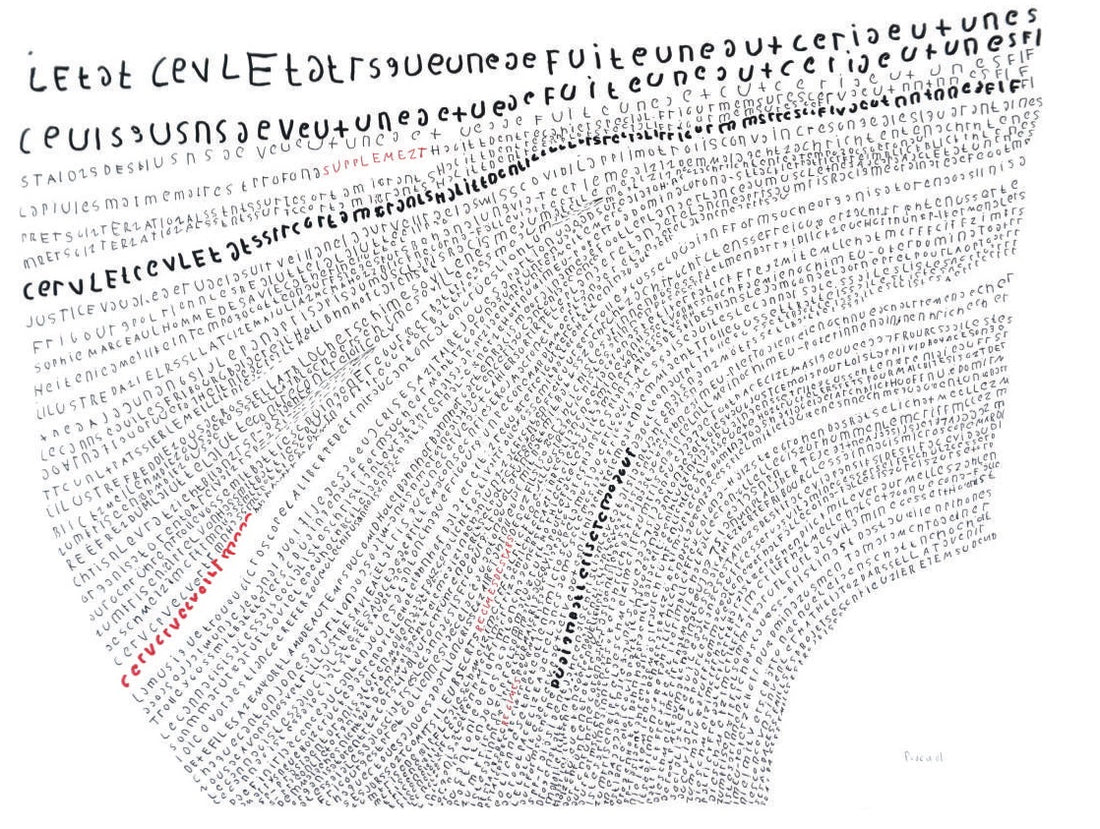First published: Summer 2023
Oblivious to their meaning, a Swiss artist takes the rigid texts of newspapers and imbues them with new movement, life and significance
He catches the bus outside his house, gets off at Fribourg station, then purposefully approaches the nearby newspaper stand and pockets a copy of the free daily publication 20 Minutes. Fribourg, in west Switzerland, is bilingual so there are French and German versions of the paper but it does not matter which one he takes as he cannot read. He then catches another bus, this time out of Fribourg to the suburb of Villarssur-Glâne where he goes to CREAHM, a creative studio for people living with disability.

Non, 2016, 27.5 x 19.5 in. / 70 x 50 cm, private collection
As soon as he arrives, he greets everyone and puts on his blue work apron. He sits down at his table – slightly apart from the others – opens his newspaper, and places a large sheet of paper beside it. This ritual takes place three mornings a week for Pascal Vonlanthen.

Moteur, 2019, 39.5 x 27.5 in. / 100 x 70 cm
Vonlanthen's iconographic vocabulary is primarily made up of farm animals – usually chickens and cows – as well as imaginary creatures and everyday objects. The finely traced, stylised forms are repeated, often side by side on the paper, systematically aligned from left to right, sometimes creating superimposed layers. Over this formal arrangement – so similar to that of writing – suddenly appear simulacra of inscriptions, as if the writing has arisen naturally from the drawing.

Moinsaeu, 2016, 27.5 x 19.5 in. / 70 x 50 cm, private collection
The third of seven children, Vonlanthen was born in 1957 in Fribourg and grew up in the village of Rossens on the family farm, surrounded by nature. From a young age, he attended a special school for children with disabilities and, while he never learned to read or write, throughout adolescence he always carried a notebook in which he put down inscriptions and drawings. Once he left school, he began to work as a janitor and has continued to do so ever since. He has attended CREAHM regularly since its opening in 1998, at first going once a week but over time increasing the frequency to two or three visits. In 2005, after his parents died, he moved to an institution in Fribourg but continued to travel out to the workshop.
By LUCIENNE PEIRY
This is an article extract; read the full article in Raw Vision #115.




